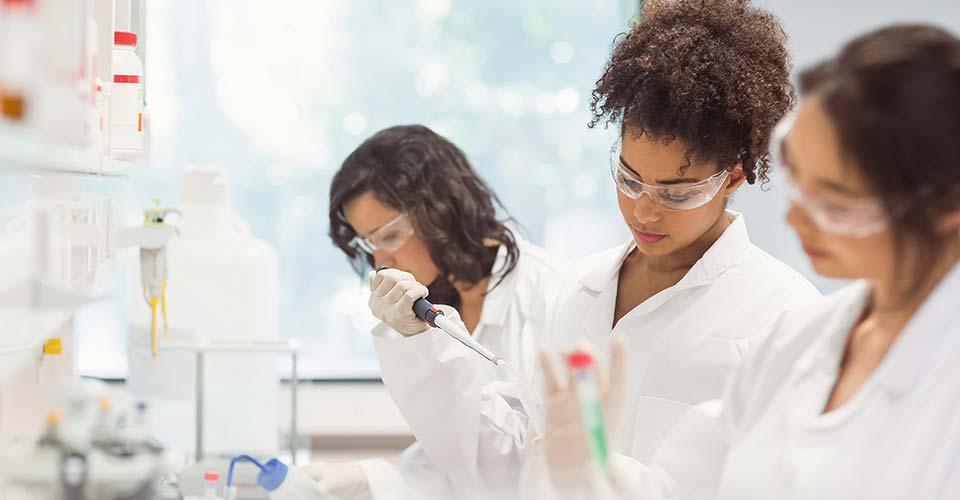Greener Chemistry for a More Sustainable World
by Mary Draves, Dow Chief Sustainability Officer

How can a running track be better for people and planet? How does a paint coating also help clean the air? What can make one soda can more sustainable than another?
The answer, of course, is green chemistry or more sustainable chemistry. Often when people hear the word “chemicals,” the reaction is a negative one. But the food we eat, the air we breathe – even you and me – are made of chemicals. All matter is made of chemicals, and chemistry, in its simplest form, is the study of matter.
But while chemistry has brought the world incredible advances and is helping us achieve a more sustainable future (including renewable energy, increased food production, safe drinking water, energy-efficient buildings and lower-carbon transportation) we realize that some technologies can also negatively impact human health and the environment.
Innovating the sustainable materials of tomorrow
With a portfolio of more than 14,000 products that support more than 10,000 customers, we know that how we make, distribute and enable the use and disposal of our products can have a large and meaningful impact on the environment. Our vision is a future where every material we bring to market is sustainable for our people and our planet.
It starts with our product safety team. Every product that is made by Dow has a team of product safety experts assigned to review and oversee its handling and use. This team ensures that our products are compliant and are safe in their intended use throughout the product life cycle and ensures appropriate steps are taken to prevent harm. We do this by assessing possible human health and environmental impacts and characterizing risks, then framing the safe handling procedures during manufacturing, transportation, use and end of life.
But it doesn’t end there. Life cycle assessments (LCAs) are an important tool to rigorously understand the impact of our products and processes on the environment. Completing an LCA helps us make decisions that account for trade-offs among a broad range of factors otherwise hard to discern, thus enabling better informed decisions. We work with our customers and other external stakeholders to develop next-generation processes and products that contribute toward a healthier ecosystem and safer world.
Through our materials science, we are enabling:
Sustainable alternatives
We are working to develop products that have less impact on the environment and human health compared to products on the market today. In fact, as part of our Safe Materials for a Sustainable Planet 2025 Sustainability Goal, we are committed to implementing 10 innovative alternatives to existing products. This is not a quick nor easy process. In addition to having a favorable EH&S profile and enhanced life cycle assessment, a product cannot be considered an alternative if it doesn’t perform as well as or better than the conventional product or achieve market acceptance.
To date, we’ve announced three alternatives: our ECOGROUND™ Waterborne Acryclic Binder System for synthetic athletic tracks, playgrounds and walkways, our ECOSURF™ EH Surfactant portfolio for household and industrial cleaners, coatings and agriculture products and our CANVERA™ Polyolefin Dispersion for metal can coatings.
ECOGROUND™ Binder provides an improved environmentally friendly and higher-performing alternative to solvent-based systems for rubberized running surfaces for playgrounds, schools, public institutions, athletic and recreational facilities. The technology is low-odor, low-VOC and does not contain free TDI/MDI.
Our ECOSURF™ EH Surfactants are readily biodegradable and meet the U.S. EPA Safer Choice Standard. Many products in this family also meet the EU Ecolabel requirements. They are designed to provide formulation flexibility and to meet or exceed environmental regulations.
CANVERA™ Polyolefin Dispersions meets the performance requirements of metal packaging without impacting food and beverage quality while also omitting materials of concern for consumers and government regulations.
Sustainable processes
We also are striving to develop products that help lower material consumption, energy, water and waste footprints across the entire product life cycle—enabling our products to help customers not only meet sustainability goals but surpass them. For example, our ECOFAST™ Pure Textile Treatment can reduce water use by up to 50% and chemical use by up to 90% in the cotton dyeing process.
Better environments
In collaboration with the Colombian paint manufacturer Tito Pabón, we are turning plants into paints. PRIMAL™ RN 1000V is a bio-based acrylic emulsion produced with carbon from plants to partially replace petroleum-sourced material. But beyond its renewable profile, this first-of-its-kind coating for the Latin America market also offers ultra-low odor, low VOC, low emissions and built-in formaldehyde abatement functionality. This can effectively improve indoor air quality, contributing to improved wellness while also protecting the environment.
Our focus on safe and sustainable materials is larger than any specific sustainability goal. It gets to the heart of what we do and how we work. At Dow, we are continuously evaluating and improving how we measure, design, manufacture, report and act on the impact of our materials to people and the planet. It’s all part of our journey to reduce our impact and to make our technologies “greener” than they were yesterday.
Mary Draves, Dow Chief Sustainability Officer

